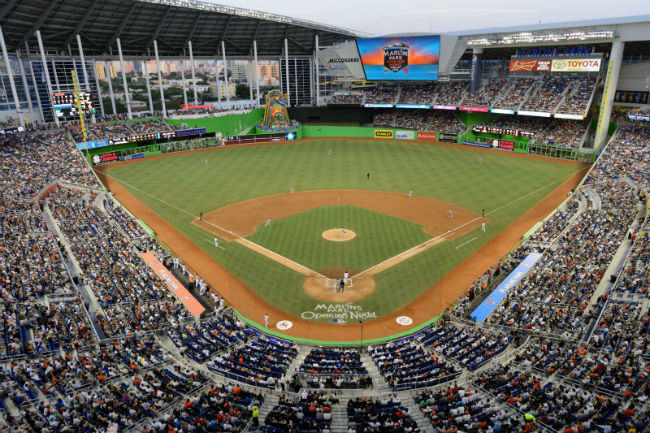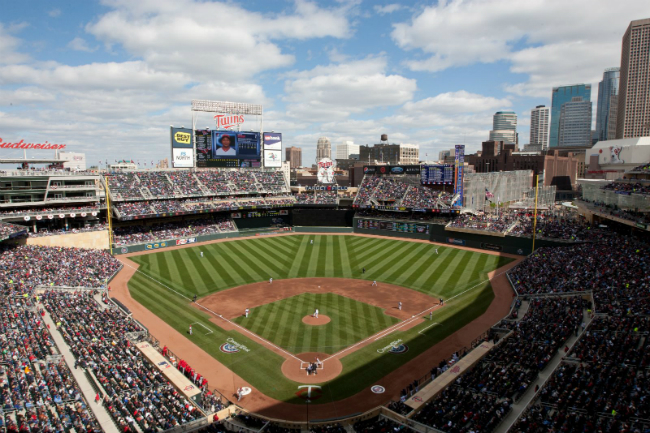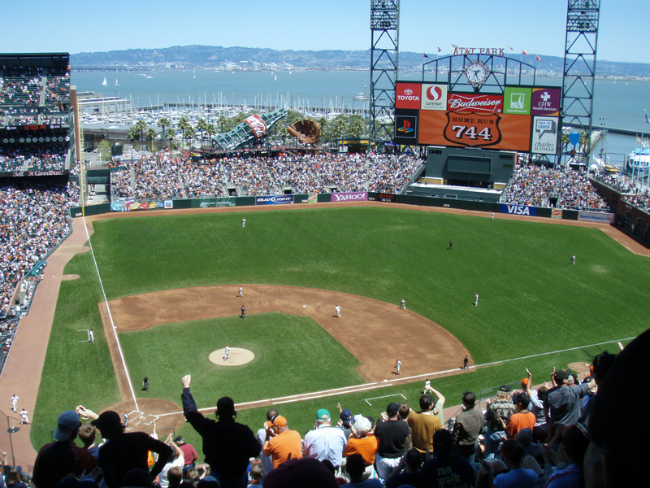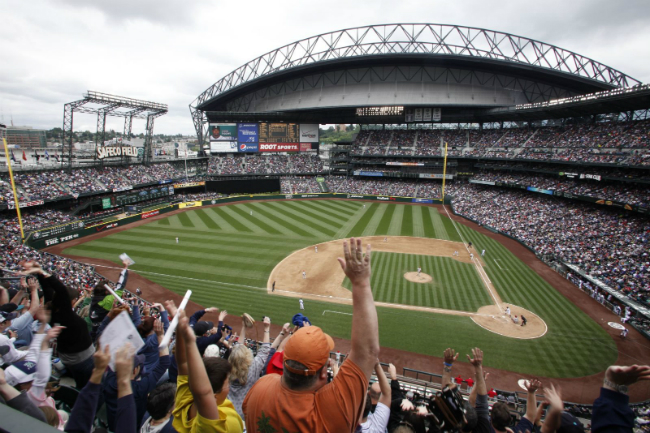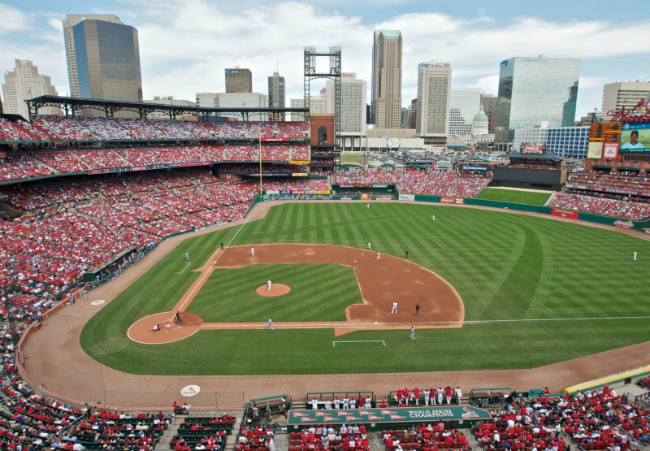America's Top 7 Energy-Efficient Baseball Stadiums
Let's Save Energy
Alliance to Save Energy's Blog
America's Top 7 Energy-Efficient Baseball Stadiums
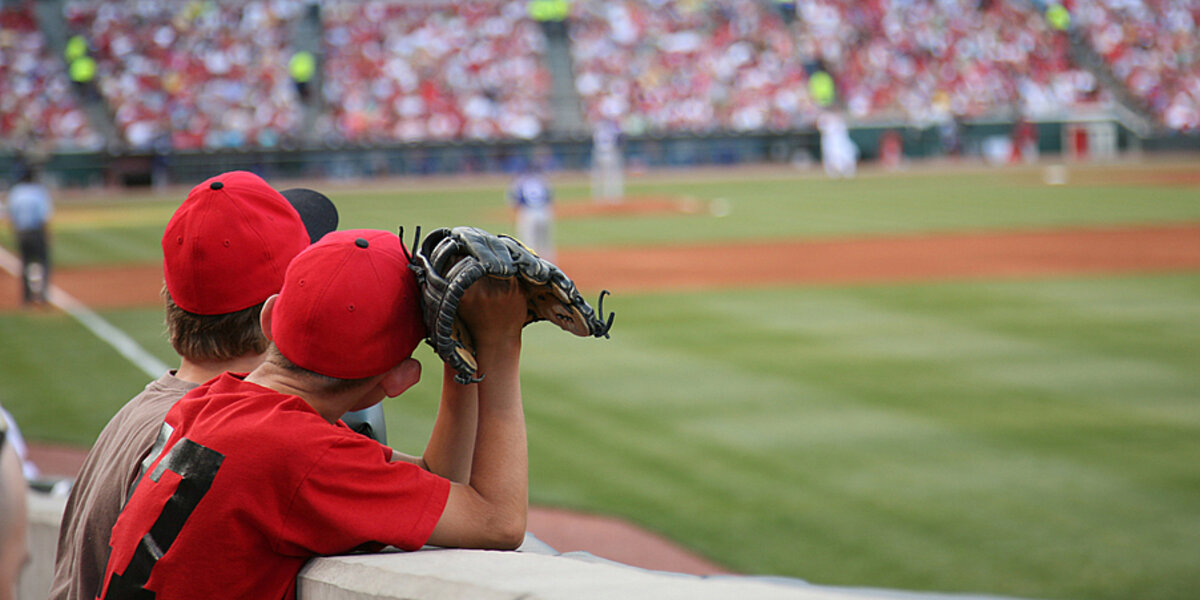
As you follow the World Series this year, there’s something else to watch besides the score: the energy-efficient features that baseball stadiums are showing off this season.
“Major League Baseball has really been a pioneer in the sports greening movement by committing holistically to environmental stewardship, which of course includes energy efficiency and water efficiency," said Alice Henly, a principal author of the Sports Greening Project's Game Changer Report, which was published in September 2012 and includes a preface by MLB Commissioner Allan H. (Bud) Selig. The report does not rank the ballparks but includes case studies and snapshots all the parks listed below.In fact, Major League Baseball (MLB) has emerged as a vanguard of the Natural Resources Defense Council (NRDC)'s Sports Greening Project, which has sparked a sustainability movement across a slew of professional and collegiate sports leagues. The MLB was the first professional sports league to partner with NRDC on the initiative in 2005.
Armed with the information from NRDC's sports report – as well as the know-how from playing on the Alliance to Save Energy's two-time league champion Killer Watts softball team (which welcomed Washington Nationals star Bryce Harper to pinch hit one day) – I feel qualified to rank our great nation's baseball stadiums on energy efficiency. My rankings are based on sheer numbers of energy-efficient features, as well as the U.S. Green Building Council's Leadership in Energy and Environmental Design (LEED) certification.
And America’s Most EE Ballparks Are…
1. Marlins Park: Miami Marlins
Photo: Marlins Park. Credit: Miami Marlins, Kelly Gavin.
This season, the Florida Marlins changed their name to the Miami Marlins and moved into the nation’s newest LEED-certified baseball stadium. Marlins Park boasts LEED Gold rating in part because its energy-efficient building envelope – and its mechanical, electrical, lighting, heating, and cooling systems – cost the ballpark 22% less on energy compared to similar structures.
- The ballpark has an 8,000-ton retractable roof that requires a lot of energy to operate, but regenerative drive systems reduce power consumption so that it costs less than $10 in electricity to open or close.
- Plumbing – which includes 250 waterless urinals – uses 52% less water than in similar stadiums. Meanwhile, landscaping around the stadium uses 60% less potable water for irrigation because its drought-resistant plants need less water.
- Windows and glass panels provide ample natural lighting.
- Marlins Park was built on the site of the old Orange Bowl, so it is accessible via multiple transportation options; the park also offers over 300 bike racks. In addition, 60% of the materials used to build Marlins Park came from within a 500-mile radius, which reduced fuel consumption.
2. Target Field: Minnesota Twins
Photo: Target Field. Credit: Brace Hemmelgarn, Minnesota Twins.
The Minnesota Twins’ Target Field was the second U.S. ballpark ever to become LEED-certified, and it is the only ballpark with LEED certifications in both construction and operations. After becoming certified with LEED Silver as a new building when it opened in 2010, Target Field went onto obtain LEED Silver for Existing Buildings: Operations and Maintenance in December 2011. In fact, upgrades to equipment, lighting, and HVAC in 2011 reduced electricity use by more than 12%, despite a new video board and added radiant heating units.
- Low-flow urinals, dual-flush toilets, and aerated faucets use 30% less potable water than conventional fixtures and save about 4 million gallons of water annually.
- Rain recycle system allows the Twins staff to use rainwater to wash the seating area; per game, the system saves them 14,000 to 21,000 gallons of water; 86 gallons of gasoline; and 57 man-hours of labor.
- High-efficiency field lighting and an automated system that shuts down lights across the whole facility at certain times each day saves the ballpark nearly $6,000 a year.
- Office staff turn off lights and computers, and engage in other energy-saving behaviors, to help save nearly 5% on office energy use.
- Target Field prides itself on being America’s most multi-modal, transit-oriented ballpark. The ballpark is accessible via light rail, commuter rail, buses lines, bike trails, and pedestrian routes, and its website offers information on traffic so drivers can plan avoid it.
3. Nationals Park: Washington Nationals
Photo: Nationals Park Opening Day 2010. By Fristle (Nationals Stadium) [CC-BY-2.0 (https://creativecommons.org/licenses/by/2.0)], via Wikimedia Commons.
When Nationals Park opened in Southeast D.C. in 2008, it made history by becoming the nation’s first major sports facility to achieve the U.S. Green Building Council’s LEED certification. Nationals Park achieved LEED Silver for New Construction largely based on the stadium’s highly efficient lighting and cooling systems.
- Highly reflective “cool roof” materials over the concession/toilet area minimize heat gains and reduce air conditioning use.
- Energy-efficient lighting uses 20% less energy than typical field lighting.
- Water-efficient plumbing uses 30% less water than comparable facilities – that’s a savings of about 3.6 million gallons of water per year.
4. AT&T Park: San Francisco Giants
Photo: AT&T Park. @ Eric Broder Van Dyke / Shutterstock.com
In 2010 – a decade after the stadium opened – AT&T Park obtained LEED Silver certification for existing buildings thanks to a stadium-wide retrofit. The lighting improvements alone included:
- Replacing incandescent lights with CFLs ballpark-wide;
- Installing motion-sensor lighting;
- Replacing concourse signage lighting with an infrared-type, high-output lamp controlled by a low-output ballast;
- Converting the 18 home batting cage sports lights to LEDs;
- Upgrading to a high-definition scoreboard that is 80% more efficient than its predecessor; and
- Installing strip curtains in all walk-in refrigerators.
5. Safeco Field: Seattle Mariners
Photo: Safeco Field. Credit: Seattle Mariners.
Through energy-efficient and other green improvements, the Seattle Mariners reduced natural gas use by 60%, electricity use by 30%, and water use by 25% from 2006 to 2011, resulting in an overall savings of $1.5 million (an annual savings of nearly $300,000). During that time, the Mariners also reduced their energy intensity by 25%, winning Safeco Field the grounds to boast lowest energy intensity of all MLB stadiums that participate in the Environmental Protection Agency’s ENERGY STAR program. Improvements include:
- Replacing the old incandescent bulb scoreboard with a new LED scoreboard, which lowered annual electricity consumption by more than 90% (from 1.2 million kilowatt-hours to 130,000 kilowatt-hours);
- Retrofitting men’s bathrooms with low-flow urinals (which use 1 pint of water per flush, rather than 1 gallon); and
- Recommissioning all HVAC systems.
6. Miller Park: Milwaukee Brewers
Photo: Miller Park. Credit: Scott Paulus/Milwaukee Brewers Photos.
Home to the Milwaukee Brewers since 2001, Miller Park is the only baseball stadium with a retractable roof to hold LEED certification for existing buildings. The stadium owes its designation in large part to energy efficiency:
- Upgrades to HVAC systems, plumbing, electrical lighting, and power systems – including the systems that control the retractable roof – are expected to reduce 1,153 metric tons of C02 emissions annually (equivalent of taking 220 cars off the road annually).
- A new high-definition scoreboard uses 50% less energy than its predecessor.
7. Busch Stadium: St. Louis Cardinals
Photo: Busch Stadium. Credit: St. Louis Cardinals.
Since Busch Stadium began improvements soon after it opened in 2006, the ballpark reduced energy use by 23% (down to 161.2 kBtu per square-foot from 211.8 after normalizing for weather). That’s a savings of about $150,000 annually. Part of the savings are due to a 2011 energy audit that resulted in:
- Replacing more than 1,000 traditional spotlights and floodlights with LED lamps to cut lighting power demand in several areas by 90%;
- Implementing a ventilation control scheme in electrical rooms to eliminate the year-round use of the equivalent of a 100-ton air conditioner;
- Installing small cooling systems for the scoreboard control room and video coaching room to substitute for huge HVAC units meant for larger areas; and
- Installing a new heat exchanger to recover heat waste and reduce the amount of heat that must be generated.
Runners Up
Fenway Park (home of the Boston Red Sox) was built in 1911, making it is the oldest MLB stadium in use. In 2010, Fenway completed an energy audit that resulted upgrades to LED lighting, waterless urinals, and a host of other energy-saving features.
Citi Field (home of the New York Mets) is an open-air stadium with a 10,000-square-foot “green” roof that acts as extra insulation to retain cool air in the summer and heat in the winter. The ballpark also is equipped with a temperature-control system that reduces energy consumption by up to 50% using energy-efficient air handlers, pumps, and chillers that adapt their operation to current conditions.
Yankee Stadium (home of the New York Yankees) displays advanced reflectors to amplify stadium light output that have 300 watts less per lamp than standard field-illuminating lights. Special controls decrease lighting spillover onto its Bronx neighbors by 50%.
Progressive Field (home of the Cleveland Indians) took on energy efficiency initiatives – like replacing signs with LED lighting – that cut the Indians’ energy use from 23 million kWh to 17 million kWh annually.
WANT MORE?
Most of the information above was sourced from NRDC's Game Changer Report.
RECENT BLOG POSTS
STAY EMPOWERED
Help the Alliance advocate for policies to use energy more efficiently – supporting job creation, reduced emissions, and lower costs. Contact your member of Congress.
Energy efficiency is smart, nonpartisan, and practical. So are we. Our strength comes from an unparalleled group of Alliance Associates working collaboratively under the Alliance umbrella to pave the way for energy efficiency gains.
The power of efficiency is in your hands. Supporting the Alliance means supporting a vision for using energy more productively to achieve economic growth, a cleaner environment, and greater energy security, affordability, and reliability.

